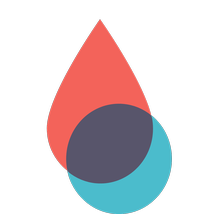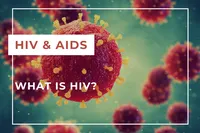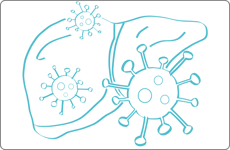Home › Biological sample › Infectious diseases › Other viruses
Biological samples from patients with various viral infections
The development of drugs and diagnostic tests for the treatment and detection of viral infections requires conducting studies on biological samples obtained from patients with viral infections.
Here's a brief overview of various infectious diseases caused by viruses and how the service provided by Labtoo contributes to accelerating R&D projects in the pharmaceutical industry.


Are you looking for biological samples from patients infected by virus ?
What are the different types of pathogenic viruses ?
Pathogenic viruses constitute a broad category of infectious agents, extending beyond HIV or Covid, characterized by their variability in terms of toxicity, frequency, virulence, and mode of transmission. These variations are largely determined by various factors, including geographical area, age, and the health status of the patient.
Viruses can affect different areas of the body, such as the respiratory system, digestive system, nervous system, lymphatic system, circulatory system, and immune system. Their mode of transmission also varies, including direct transmission through unprotected sexual intercourse, respiratory transmission, ingestion of contaminated water or food, or transmission through a biological vector such as a mosquito or tick.
This page aims to list some of the most common viruses based on their mode of transmission.

| Virus Example | Atypical Symptoms | Transmission Method |
|---|---|---|
| Measles | Pneumonia, encephalitis, blindness, skin rash | Airborne (Respiratory droplets) |
| Herpes Simplex | Meningitis, encephalitis, neuritis, atypical genital herpes | Direct contact with infected skin or mucous membranes |
| Rotavirus | Convulsions, severe dehydration | Ingestion of contaminated water or food |
| Dengue | Shock syndrome, severe bleeding, Guillain-Barré syndrome | Bite of Aedes genus mosquitoes |
Explore Labtoo's Service for Your Biological Sample Research
Labtoo assists you in sourcing biological samples from patients with viral infections. Our team manages the entire project of transferring biological materials from inception to sample delivery.
- Feasibility assessment of sample availability or clinical collection from referenced clinical centers
- Validation of regulatory aspects
- Establishment of a contractual framework
- Dispatch of desired samples under appropriate conditions
- Transfer of associated clinical data
- Additional analytical and experimental services
Types of available samples
Fresh tissues
After a resection or a biopsy, a pathologist can decide whether the tissue sample can be used for research. Labtoo can organize the conditioning and shipment of fresh infected tissue in 24-48 hours after surgery.
Frozen tissues (OCT and FF)
Similarly to fresh tissue, once the tissues are cleared for research, the clinical site can freeze and keep the frozen tissue samples at -80°C or in liquid nitrogen for ulterior use.
FFPE Tissues
Pathologists typically embed the biopsies and resections in paraffin. FFPE blocks of infected tissues can be used later for research.
- Whole Blood: From patients with virus
- PBMC (Peripheral Blood Mononuclear Cells)
- Plasma/Serum
- Leukapheresis
- Urine
- Cerebrospinal fluid
- Nasopharyngeal swabs
- Mucus
- Saliva
- Other
Typical associated clinical data
-
- Age
- Gender
- Ethnicity
- Detection Method
- Serological result
- Bacterial Load
- Follow-up Treatment
- Simptomatology
- Medical Imaging
- Positivity/Negativity for certain Infections
- Other Data (upon request)

Labtoo identifies clinical sites that can prepare and transfer sample collections tailored to your specific project needs.
Contact our team to discuss your project.
Send your request to our team:
Vector-Borne viruses
Similar to malaria, Lyme disease, and typhus, which are bacterial and parasitic infections transmitted by vectors such as mosquitoes or ticks, viral infections are also transmitted by biological vectors like mosquitoes of the genus Aedes. Among these vector-borne viral infections, we find:
Dengue
Caused by the dengue virus belonging to the Flaviviridae family, this disease is primarily transmitted by Aedes aegypti mosquitoes. It poses a major public health problem in tropical and subtropical regions.
Symptoms range from mild to severe, including high fever, severe headaches, intense joint and muscle pain, skin rashes, swelling of lymph nodes, and bleeding
Chikungunya
Caused by the chikungunya virus (CHIKV), of the Togaviridae family, also transmitted by Aedes aegypti or Aedes albopictus mosquitoes.
This disease particularly affects tropical and subtropical regions and presents with high fever, joint pain, fatigue, and skin rashes.
Zika virus disease
Transmitted by Aedes mosquitoes, especially Aedes aegypti and Aedes albopictus, this disease is caused by the Zika virus, belonging to the Flaviviridae family.
It is associated with serious complications such as congenital malformations and Guillain-Barré syndrome, and is characterized by symptoms such as fever, skin rashes, and muscle pain.
Yellow fever
Caused by the yellow fever virus, of the Flaviviridae family, this disease is transmitted by various mosquitoes, including Aedes aegypti in Africa.
It may be asymptomatic in many patients, but common symptoms include fever, muscle aches, headaches, loss of appetite, nausea, and vomiting.
In some patients, a toxic phase may occur, characterized by higher fever, jaundice, abdominal pain, and can be fatal.
Respiratory viruses
These viruses are most commonly transmitted through inhalation of respiratory droplets produced by an infected individual. While this is the most common method, viruses classified here can also be transmitted through other means. Among these viruses, we can mention Covid-19 and the influenza virus. Generally, these viruses cause symptoms such as cough, nasal congestion, sore throat, sneezing, fever, and muscle fatigue. Here are some other examples of viruses contracted through this route:
Measles virus
This is a highly contagious virus transmitted through contaminated droplets. It enters the body through the respiratory tract and typically infects the epithelial cells of the upper respiratory tract.
The disease is characterized by the appearance of a red rash on the body, often starting on the face. These symptoms are frequently accompanied by fever, cough, runny nose, and conjunctivitis.
Severe cases can occur, manifesting as pneumonia, encephalitis, or even blindness and deafness.
Varicella-Zoster virus
Belonging to the Herpesviridae family, this virus is highly contagious and is transmitted through respiratory droplets or direct contact with skin lesions of an infected person. It has the peculiarity of causing two different pathologies: chickenpox and shingles. Chickenpox is characterized by the appearance of a rash all over the body, sometimes accompanied by headaches, fever, and fatigue. After the disease resolves, the virus remains latent in the nerve ganglia.
It may reactivate years later in a nerve, causing shingles, characterized by a painful rash occurring in a specific region of the body, often along a nerve. This rash consists of fluid-filled blisters. Shingles symptoms include intense pain, burning sensations, and itching.
Respiratory syncytal virus
Belonging to the Paramyxoviridae family, RSV is a common cause of viral respiratory infections in infants and young children. It is primarily transmitted through direct contact with respiratory droplets and often causes seasonal outbreaks between fall and winter. Commonly associated symptoms include cough, cold, fever, nasal congestion, wheezing, and difficulty breathing.
In infants under 1 year of age, RSV can lead to severe complications such as bronchiolitis and pneumonia.
Directly transmitted viruses
These viruses are typically transmitted through physical contact with an infected person, especially through sexual contact. Among the most well-known are HIV and various hepatitis viruses. Direct transmission is common in most cases of sexually transmitted infections (STIs), although some viruses, such as the Epstein-Barr virus or the herpes virus, may not necessarily spread through sexual contact. The severity of these viruses varies, but some can lead to serious conditions.
Here are some examples of other viruses transmitted through this mode of transmission:
Human papillomavirus
Primarily transmitted through unprotected sexual contact, HPV can also spread through skin-to-skin contact. Some strains are associated with skin or genital warts, while others can cause precancerous lesions, especially in women, and are a major cause of cervical cancer.
Herpes simplex virus
Transmitted through direct contact with infected skin lesions or mucous membranes, HSV can cause two types of infections: HSV-1, associated with oral lesions, and HSV-2, primarily associated with genital infections. These infections are recurrent and can cause systemic symptoms such as fever.
Epstein-Barr virus
Mainly spread through bodily fluid exchange like kissing or sexual contact, EBV is often asymptomatic but can cause mononucleosis. In rare cases, it is associated with serious illnesses such as lymphoma or nasopharyngeal carcinoma. After the initial infection, the virus remains latent in the body and can reactivate periodically.
Viruses transmitted through ingestion
Ingestion of water or food contaminated with fecal matter is a common route of bacterial infection, but it can also lead to viral disorders, notably certain types of hepatitis such as hepatitis A and hepatitis E. The symptoms of these infections vary, although they share some common features such as fever, fatigue, diarrhea, and gastrointestinal inflammation.
Among the viruses transmissible through ingestion of contaminated water or food, we can mention:
Noroviruses
These are among the most common agents of viral gastroenteritis. Symptoms include nausea, vomiting, watery diarrhea, fever, and muscle aches.
While not typically fatal, these viruses can cause severe dehydration in vulnerable individuals.
Rotaviruses
Similar to noroviruses, rotaviruses are frequently associated with viral gastroenteritis.
Symptoms include nausea, vomiting, diarrhea, fever, and muscle aches.
Unlike noroviruses, rotaviruses primarily affect children under the age of 5. They are responsible for millions of cases of gastroenteritis each year and are a significant cause of death among young children, particularly in developing countries with limited access to medical care.



